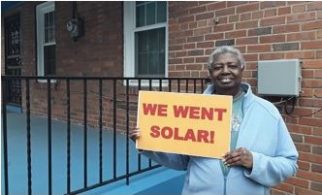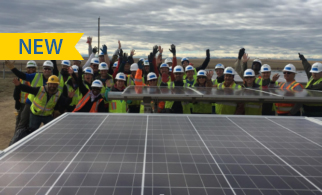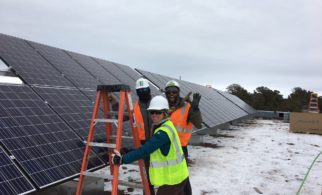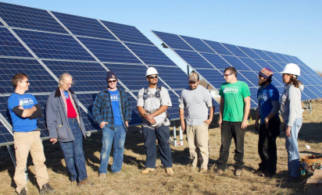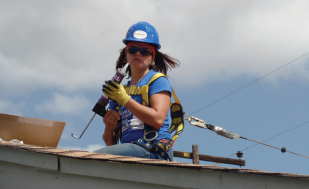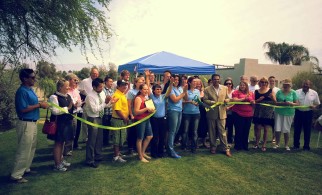Workforce Development
Overview
Low-income solar programs provide a great opportunity for states and municipalities to incorporate workforce development requirements that provide job training opportunities and direct pathways to employment in solar for local workers. Solar is a rapidly expanding industry, with a sustained job growth over the last seven years, and it is a strong employer of minorities and veterans.
Successful strategies
Low-income solar programs with a workforce development component should include the following components:
- Outreach to community colleges, job training organizations, housing authorities and other entities that serve lower-income and minority populations;
- Hands-on training opportunities, including both paid (ideal!) and unpaid, that prepare individuals for jobs in the industry;
- Tracking tools and requests for data to analyze and track job placements or further training obtained;
- Meet people where they are at! Include appropriate wrap-around services and soft skills development such as funding for childcare and transportation; professional skills like resume development and time management; and life skills including computer literacy and financial planning;
- Local hiring and procurement policies that reinvest tax dollars back into the local economy, curb the environmental impact of commuting, and foster community involvement; and
- Partnerships with the industry to promote hiring.
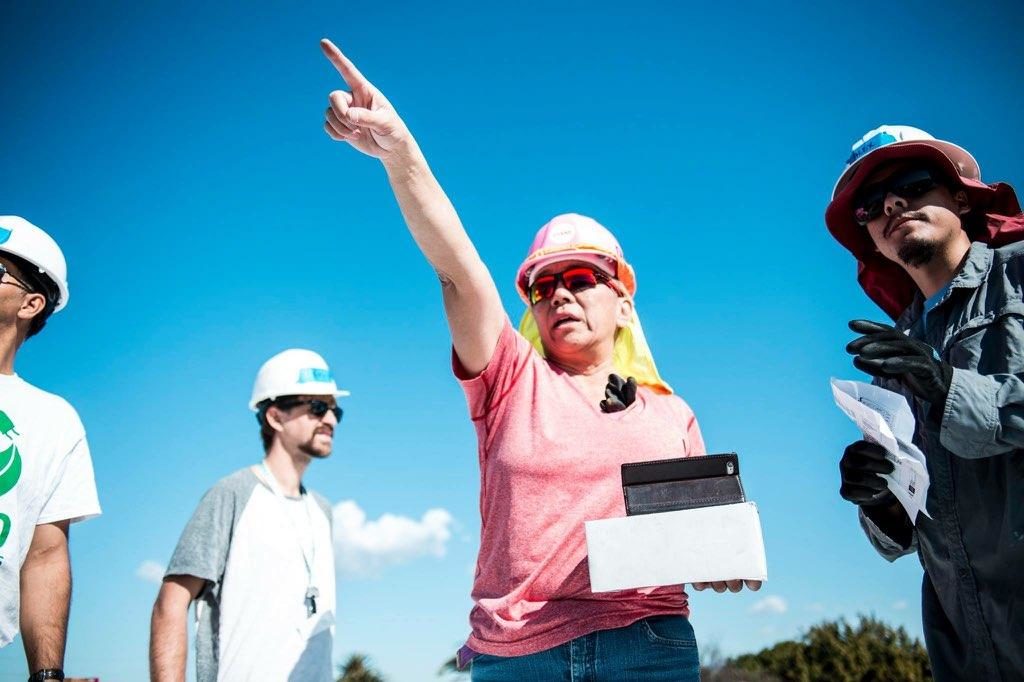
Additional Considerations
As you’re incorporating training and workforce development opportunities into your low-income solar program or policy, make sure your state or municipality is supportive of trainees or community members participating in solar installations.
- Step 1. Look up state requirements in the IREC Solar Licensing Map. This database will provide you either a good overview of who is qualified to install solar in the state or links to where to find answers to your questions.
- Step 2. Go to the state’s licensing board website. Depending on how complex the state’s protocol is for installing solar (e.g. rules and regulations for who is permitted to install, contractor’s licensing applications, Journeyman or Master Electrician applications and exam info where required, etc.). Some states do not have trades licensing at state level but have requirements per jurisdiction.
- Step 3. Ask questions! Check with your industry contacts and the NABCEP Certified Locator to connect with someone who has experience installing solar in the state and ask clarifying questions on solar installation requirements.
Considerations for Local Hiring and Procurement
An excellent strategy for workforce development inclusion is through energy procurement. Municipal, state and federal government policies have demonstrated that procurement practices can support workforce development, as well as inclusion and diversity in the workforce. HUD’s Section 3 program is a strong blueprint. This program requires that recipients of certain HUD financial assistance, to the greatest extent possible, provide job training, employment, and contract opportunities for low- or very-low income residents in connection with projects and activities in their neighborhoods. The NAACP also outlines best practices for equity in energy procurement in their Just Energy Policies Guide including policies to support minority-owned and women-owned businesses. This type of policy will ensure that renewable energy procurement provides workforce development and employment opportunities to communities who need them most.
Increasingly, as more cities and local jurisdictions make commitments to clean energy targets, it is important to consider local workforce impacts. Procurement strategies associated with these commitments can also ensure that local workforce development opportunities are created for those who need them most.
